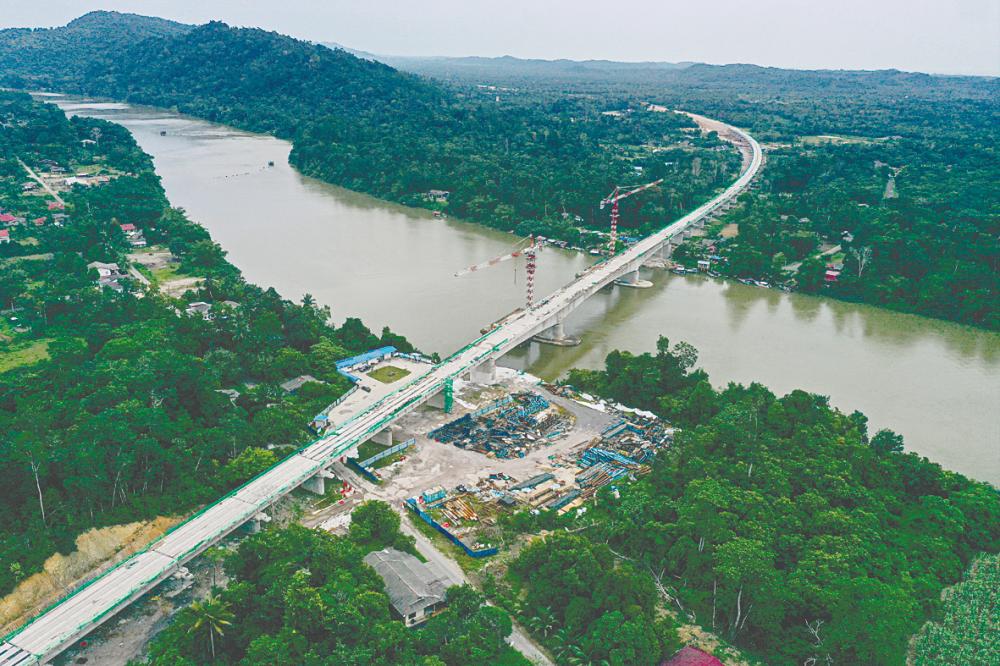CHINA’S ambitious railroad project, part of its Belt and Road Initiative (BRI), aims to realise a vision of a Southeast Asia where trade flows like water, goods and services move effortlessly across borders and new industrial clusters flourish.
This will only help deepen economic links between Asean member states and China’s less developed southwest region.
BRI’s decade of progress
Chinese President Xi Jinping’s rail and infrastructure projects are central to a broader strategy of enhancing connectivity and driving growth across Asia, Europe and Africa.
Marking the BRI’s 10th anniversary in October 2023, Xi stated, “Covering land, ocean, sky and the internet, this network has boosted the flow of goods, capital, technologies and human resources among countries involved.”
In June 2023, Chinese Premier Li Qiang spoke at the groundbreaking ceremony of Malaysia’s East Coast Rail Link (ECRL), set to connect the country’s east and west coasts by 2026.
Li emphasised how linking the ECRL to other China-backed railway projects would enhance regional connectivity. More than that, this will be a game-changer.
Following his recent visit to the People’s Republic of China, Malaysia’s King, Sultan Ibrahim, sought prospective investments from Chinese investors to revive a project that Malaysia had unexpectedly halted following the 2018 general election.
Shifting global dynamics
The global political landscape has shifted significantly in recent years. The two major
developments come from America and India.
In the United States, Donald Trump’s presidency saw heightened anti-China sentiments and an “America First” campaign that aimed to phase out Chinese imports and ban outsourcing to China.
In India, Prime Minister Narendra Modi’s plans to transform the country into a global manufacturing hub, particularly in semiconductors and electric vehicles, pose a potential challenge to China’s economy.
These developments have influenced China’s infrastructure push.
As tensions with the US persist and India emerges as a potential rival, China is increasingly focused on strengthening economic ties with Asean countries through what appears to be railway diplomacy.
China’s economic expansion strategy
While debates about China’s intentions continue, its regional influence is complex and multifaceted, differing from historical empires that relied on military conquest.
A 2021 World Economic Forum report on BRI’s impact on cities stated that “connectivity is not only a major new trend of our time but also a key driver of future economic growth”.
China’s expansion strategy is evident in its participation in major Asian infrastructure projects.
The China-funded US$7.3 billion (RM31.32 billion) Jakarta-Bandung High-Speed Rail is expected to cut fuel costs by US$197 million while reducing travel times, and driving economic transformation.
In Malaysia, China became the largest investor in 2022, funding projects worth US$13 billion and renewing a five-year economic and trade cooperation programme. More recently, Malaysia announced that it was spending RM10.7 billion to purchase 62 passenger trains from China.
Elsewhere, China remains the Philippines’ fourth-largest trading partner despite the South China Sea tensions. In Thailand, China was the largest foreign investor in 2023, particularly in new-energy vehicles and electronics industries.
Silk Road impact in Southeast Asia
The BRI aims to secure critical maritime arteries like the Malacca Straits and Suez Canal, enhancing China’s regional influence. However, the initiative’s promise is tempered by potential risks.
In the Philippines, China’s pledge of US$5 billion for railways was withdrawn in 2022 due to stalled loan talks amid diplomatic tensions while Indonesia’s improved connectivity and infrastructure is always peppered with concerns about debt and social upheaval.
Thailand sees growth in digital and green industries but faces concerns over trade deficits, environmental impacts and effects on ancient sites and communities.
Malaysia experiences economic growth and job opportunities, especially in rural areas but faces challenges related to land rights, labour issues and cultural sensitivities.
Path forward
Southeast Asian nations are at a critical juncture as the BRI reshapes the region.
The initiative’s success depends on leveraging investments to bolster economies while protecting national interests, cultural identities and strategic autonomy.
To navigate this complex landscape, policymakers must involve businesses and communities in decision-making processes.
In addition, it is vital to have a balance between economic growth with concerns about debt, land rights and cultural preservation. Adopting proactive strategies that preserve sovereignty and cultural integrity will also go a long way forward in ensuring that there is stakeholder buy-in into the greater business dealings with China.
By carefully managing these challenges, Southeast Asian nations can emerge stronger and more unified, harnessing the potential of China’s railroad diplomacy while safeguarding their interests.
Datuk Seri Vijay Eswaran is a prominent Asian thought leader, philanthropist, speaker and author. He is the founder and executive chairman of the QI Group of Companies, a multinational conglomerate headquartered in Hong Kong that has diverse business interests in areas
such as education, retail, direct selling, real estate, hospitality and luxury products.
Comments: letters@thesundaily.com









